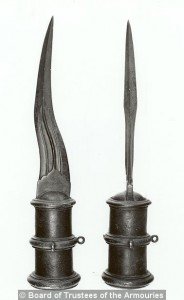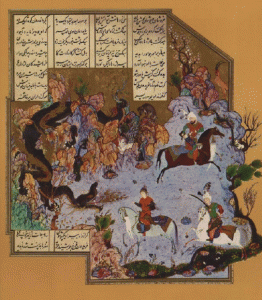World Building Wednesday: A series of short posts in which I write about my personal theory of how I approach world building, specifics of things to consider, and practical suggestions on how to use world building in the text. This is not a prescriptive program. I don’t think people must do things the way I do. I talk about my process because it is what I know. That’s it. Short bites: long tail.
Today I’m thrilled to present a guest post by Aliette de Bodard. Having written about whether I use an inductive or deductive (top down or bottom up) approach, I thought it would be illuminating to see how another writer works in a way different from my own. I can’t emphasize enough that writing isn’t a specific process to learn, but rather a matter of discovering the process works for you.
Here you go:
From the top down, or how vibes and research drive my worldbuilding
by Aliette de Bodard
Disclaimer: this is the way things happen to work for me now. Like all writing advice, this is no way an obligation. I’m simply sharing stuff that currently helps me write fiction–and if it doesn’t work for you, or if only part of it works for you, that’s totally cool. Everyone has a different process, and also processes change quite a bit over the months/years!
I have a tendency to build my universes from the top down.
It’s by no means an absolute rule: I’m a big fan of “whatever works”, and especially for short stories I have built with a mixture of top down and bottom up, or simply bottom up like Alis does (though I can’t noodle for long. I have to get specific fairly fast).
But very often, with longer works, I tend to go for a very specific vibe, often tied to a subgenre/mix of subgenres that I find intriguing. Obsidian and Blood was explicitly conceived as a series of noir mysteries/fantasies featuring Aztec culture (and in particular Aztec magic derived from blood sacrifices).
The vibe is the dominant mood of a setting for me: for instance, Xuya, my Vietnamese space opera universe, is heavily focused on families and interpersonal relationships, and on the intersections of tradition and science. It gives a certain… tone to the stories? I’m not saying they’re all comedies or tragedies! But rather that they have a certain thematic focus on families and daily life, and that they also have an accompanying tone (what I think of as “quiet”, “intimate” stories rather than large-scales ones). They’re very different beasts from Dominion of the Fallen stories/novels.
Dominion of the Fallen (my series which started with The House of Shattered Wings, and which I’m working on at the moment) is a decadent/post-apocalyptic series set in a Paris devastated by a magical war. The thematic focus is the mechanics of survival/the impossible choices faced in a resource-scarce environment, and the tone is (grim)dark. Even in the short story “Of Books, and Earth, and Courtship” (an adventure/caper featuring two characters who fall in love with each other), the setting is never free of I think of as “grimdark 19th Century”: huge social injustices, an omnipresent colonial mindset, and oppressive, cruel characters in positions of power. In that story, it’s background, and not the main focus of the narrative, but it’s still there.
Once I have a setting, I research a lot. I tend to pick time periods that I think will be relevant: for Xuya, it’s 19th-Century/early-20th Vietnam (which serves as the basis for an intergalactic empire based on Vietnamese culture). For The House of Shattered Wings, I researched Belle Epoque Paris, as well as the history of colonies in both World Wars/colonial immigration to France in the first half of the 20th Century. I read fiction from the time period, non-fiction on it, and other media I find interesting (amusingly, for The House of Shattered Wings, I ended up drawing on a lot of anime, both set in Western-inspired worlds, and in post-apocalyptic settings: Black Butler, Full Metal Alchemist, Ergo Proxy).
This gives me what I think of as the base. The base is the backdrop against which the characters move: it’s both the physical settings (a Vietnamese pagoda orbital is very different from a magically nuked Notre-Dame) and the resulting mindsets of characters. Mindset being very important to me, because otherwise everyone ends up feeling like 21st-Century French characters in period costumes. For instance, in Xuya, familial ties and ancestor worship are very important: characters always know who is eldest/youngest in a relationship. In Dominion of the Fallen, the mindset is pragmatic: it’s not so much what you do, as what you can get away with–all hidden under a thin veneer of politeness and courtesy that preserves an increasingly fragile social order.
I need to know this in order to know about my characters: how usual or unusual they are, against accepted norms. A Xuya character with no respect for their parents, for instance, is wildly outside the norm and possibly a bit of a pariah because of this. And Madeleine, a character in The House of Shattered Wings, is what we would think of, today, as a decent character who tries to do the right thing: in that universe, however, she is widely viewed as being too naive and principled to survive.
I then get the plot in a sort of organic fashion from the worldbuilding: after all of this work,I generally have strong images and ideas for scenes that I slowly string together until it (hopefully) coalesces into something that makes sense! And, lately, about halfway through writing the book, I will pause and look again at the plot on the basis of what’s been written so far, to see if the extra worldbuilding I improvised as I was writing has shaken loose any ideas.
You’re going to point out this method leaves little room for improvisation. Actually, it does! I like having a large chunk of the worldbuilding while in planning stages (because I’m lazy and it’s cheaper to do it early), but there’s also a significant portion that gets added in/changed as I’m writing, because I can’t plan everything in advance.
It can be small things, or large ones: a lot of it is details, which have to be congruent with the larger setting. I agonise over small throwaway things, like the exact name for a low-level servant in my alternate universe (where domestic service isn’t gendered, so “maid” isn’t going to work), or where people get their running water from to wash their laundry (which turns out to be trickier than you think in a city where the Seine has turned dark and rather… aggressive). Some of it comes straightaway without much effort, and some of it comes from research: one particular scene ended up having lush, green gardens because the name of the place evoked something I’d seen elsewhere.
So my worldbuilding process looks a bit like this:
- Get a high-level concept
- Research, research, research
- Get images, ideas and snippets from research
- Create a plot congruent with the mood of 1.
- Draft, while improvising missing details (keeping previous steps as an overall guideline)
So that’s my worldbuilding process –or at least, the way I currently do it, because, like anything to do with writing processes, this is always breathing and changing and springing last minute surprises on me!
#
KE: Many, many thanks to Aliette for a fantastic and illuminating post. It’s so important to see how varied and adaptive the writing process is. Remember: The goal is to figure out WHAT WORKS FOR YOU (and what works for the current project).
Next week: The Map As Theory
Previously: Introduction, The Flowering of an Image, Inductive or Deductive, Image to Idea: A Practical Example






